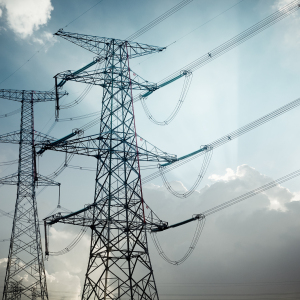The Clean Power Plan, or CPP, has the potential to upend how state public utilities commissions do their jobs. It’s a potentially dangerous and damaging consequence of government-induced higher electric rates to consumers. Some say it’s an unintended consequence, but is it?
Much attention has been paid to the potential benefits of the EPA’s national imposition of its CPP on states and localities. While the goals are clear – a 30% reduction in CO2 emissions from power plants by 2030 with most of that reduction coming by 2020 – the real impact of it on the environment is questionable at best and murky in reality with little real scientific debate “allowed”.
What are not discussed are the human costs and the very disturbing policy implications that flow from this extreme and complicated plan.
Public utilities are the foundation for our quality of life. Since our founding, Americans have worked tirelessly to bring transportation, communications, sanitation, and energy to every part of our nation, however remote. We don’t rest until the railroad reaches coast-to-coast, and the last home on the line gets their power, their telephone, their communications.
There’s virtually universal agreement that affordable and reliable electricity is the main engine for a productive society with a high standard of living. And, providing those services, those public utilities, reliably and at the lowest cost has always been a driving force and principle.
Until now, that is.
Today, by pursuing what are essentially politically driven environmental goals, the EPA has abandoned the notion that providing low cost power to Americans is, or should continue to be, a public policy goal. By their own admission, and that of the administration, EPA’s plan will cause electric rates paid by consumers to rise significantly and permanently – by an average of over 7% nationwide and much, much more in some localities and states. In the president’s own words, under his agenda, electric rates will “necessarily skyrocket”.
State PUC’s have long worked to achieve and maintain a delicate balance between the need to provide utilities with a fair return on their investment, and the need to hold electric rates at levels affordable enough to ensure accessibility. Utilities must be allowed to collect enough revenues to cover their costs of providing service plus a reasonable profit. Without a decent and fair return on investment, power plants wouldn’t exist because no one would invest in them. And, state PUC’s have traditionally required utilities to use the lowest cost generation available—to keep rates affordable for customers.
So when EPA proposes a plan that will admittedly cause electric rates to “skyrocket,” it is consumers who will ultimately feel the pain as utilities make the necessary expenditures and investments to meet, in this case, the new EPA “carbon” standards.
With mainstream media attention focused primarily on the environmental goals set forth as the reason for the plan’s existence, relatively little attention has been paid to the impact on people, their communities, and their families, many of whom are still struggling to make headway against a stubbornly weak economy and job market.
When low- and fixed-income consumers are asked about their power bills, many show dismay or even resentment at the choices high power bills force them to make. Limits on discretionary spending, choosing between air conditioning and prescription medicines or, in some cases, even food, are common complaints.
Here’s where the “unintended” consequences for state PUC’s come in.
When consumers complain about electric rates, the “problem” inevitably lands on the doorstep of the PUC’s and its members. Historically, PUC’s work to responsibly set cost-based rates and do not deal with public policy or political issues. The EPA’s Clean Power Plan has the clear potential, and probability, to change all of this, forcing PUCs to consider ways to provide affordable rates to those least able to pay. Inevitably, that must involve looking for ways to set rates higher for some individuals than others in an effort to subsidize lower income ratepayers. This fundamental politicization of the PUC mission is unacceptable and should be viewed as a potentially dangerous development.
Affordable and reliable electricity is an important principle for ensuring a reasonable standard of living and quality of life for all Americans. PUC commissioners shouldn’t be put in the position of having to take from one consumer in order to give to another. Yet EPA’s CPP will do just that. Whether by design or not, it’s yet another, powerful reason for states to opt out and for EPA to shelve the plan.

